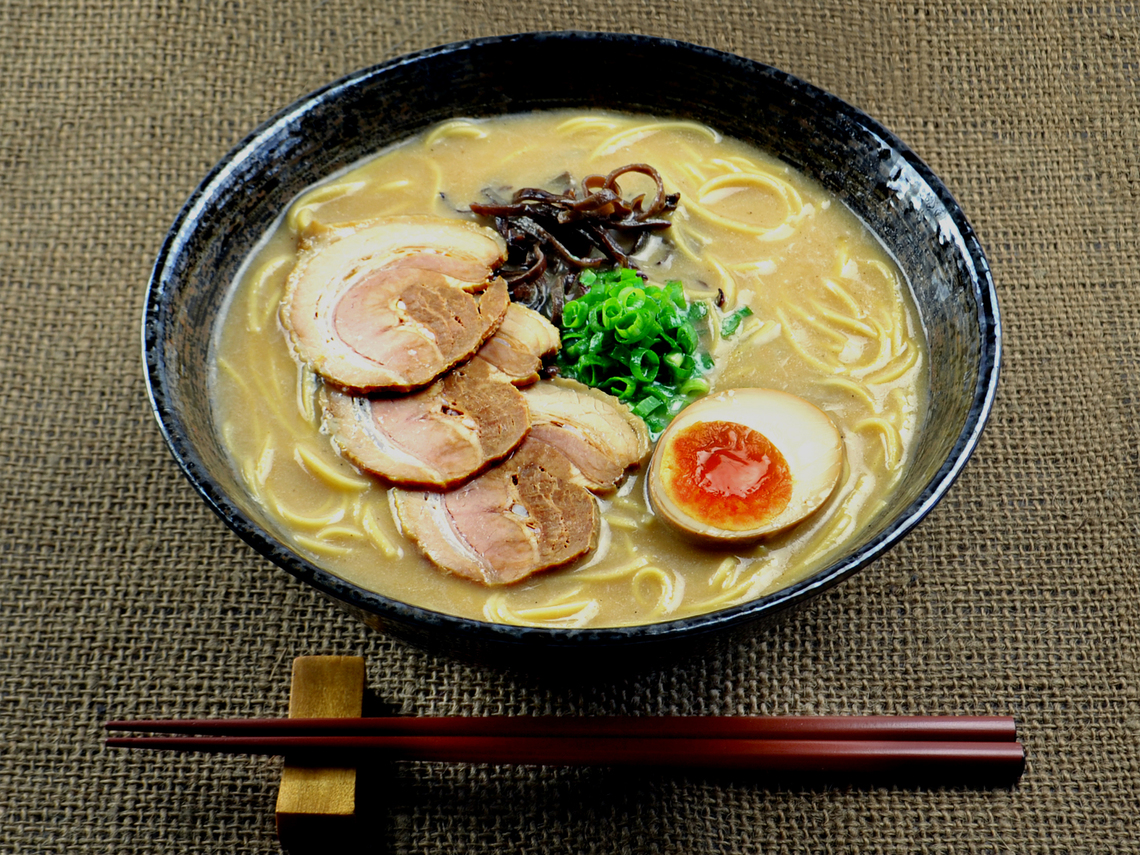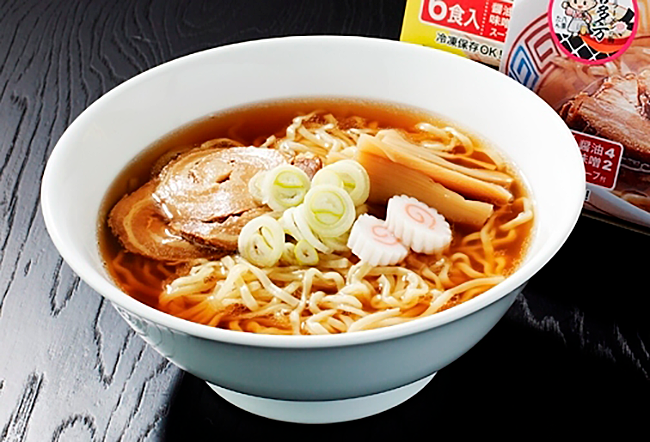Spring is here.
The other day, lured by the warmth, I took a walk along the Tama River. Feeling bold, I marched steadily toward the river mouth, and before I knew it, I'd arrived at Haneda Airport's international terminal. I was startled because I had this feeling it was the kind of place you shouldn't walk to.
Anyway.
This story goes back over 30 years. In the basement of a commercial building in Shibuya, there was a specialty food court called "Men Dojo." As a third-year junior high student, I was completely captivated by the "Kumamoto Ramen" I ate there for the very first time in my life.
The milky white, rich and thick pork bone broth. The dark liquid floating on the surface (later discovered to be "ma-yu" oil). Crisp raw cabbage. Melt-in-your-mouth braised pork belly. Green onions. Wakame seaweed stems. Firm noodles. Everything was shocking. Suddenly, the soy sauce ramen I'd thought was delicious at my school's third cafeteria seemed utterly boring. It wasn't cheap, but I'd tell my mom, "I'm getting a haircut," get 3000 yen, get my hair cut at a 1000-yen barber in Shibuya, and use the difference to go back for "Kumamoto Ramen" many times.

Kumamoto Ramen
Innovation is "something that brings about irreversible change in people's actions, habits, and values." If that's the case, that Kumamoto ramen was pure innovation. Before, "ramen" meant "a dish with (so-called) Chinese noodles in a soy sauce, miso, or salt broth." But it completely expanded the horizons of noodles, broth, toppings, and seasoning.
Another unforgettable culinary innovation experience was "yakiniku" (grilled meat). When I was a kid, yakiniku restaurants typically served loin, rib, grilled liver, and grilled vegetables. It was a place to eat lots of rice with a brown, sweet sauce. Salted tongue might have been available, but it wasn't that common.
The turning point came soon after starting my job, when a senior colleague took me to a place near Kachidoki Bridge. The meat was covered in a thick layer of finely chopped green onions. When I tried to grill that side on the charcoal grill, I got yelled at: "You're gonna burn it!" I carefully grilled just one side, then took a big bite. The rich meat juices, seasoned with salt, were refreshing, and I chugged beer. I ended up reflecting, "Why did I ever eat it with sauce? Why didn't I try salt all this time?" I wanted to eat it every day, but that would have been too hard on my wallet, so I experimented at home. Finally, I managed to recreate it somewhat using white sesame oil, green onions, garlic, sesame seeds, salt, pepper, and kombu dashi (granules). I'd gather friends and we'd savor it.

While I've tasted other things I'd call the best flavors of my life, Kumamoto ramen and scallion-salt grilled meat stand apart in terms of that "What the heck is this?!" shock and the "I can't stop eating this!" impact. They're truly a major revolution in ramen and grilled meat. I introduced them here because they perfectly fit the definition of "innovation" I use in this column.
That said, lately, maybe due to my advancing age, I find plain old "soy sauce ramen" delicious. It's that taste I had at the third cafeteria in high school.

Maybe the noodles are a bit thick? But it's a nice sight, isn't it?
Huh?
I feel like my actions and values are returning to normal, but that's surely a different issue. Next time, I'll use "edible chili oil" to think about the "concept" that drives innovation.
Enjoy your meal!





